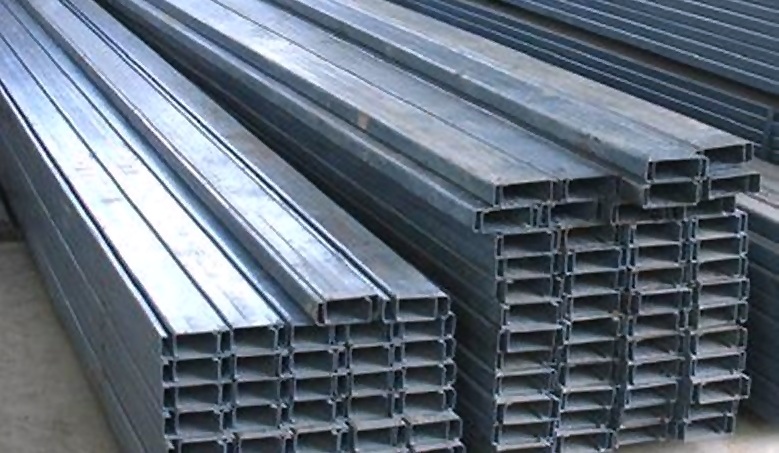Is the desire to reduce the embodied carbon of new buildings damaging the UK steel industry?
Contents |
[edit] Introduction
The news in 2019 about the troubled British Steel site in Scunthorpe isn’t the first time the UK steel industry has faced serious financial challenges and whether you believe the UK needs to have a national steel industry or not, the reliance of communities on steel production and the need for steel to support our various industries, from aerospace to construction, is undeniable.
Previous posts have detailed the contribution of the steel industry to climate change, and when faced with the knowledge that recycled steel has about 30% of the carbon impact of primary steel, it is easy to understand why some developers (and indeed sustainability consultants) believe that specifying an increased recycled content in steel sections used in construction, is a great way to reduce the embodied impacts of a building.
[edit] But is this the case?
Steel is the most widely recycled material with over 90% of waste steel in the UK captured and recycled. The specification of increased recycled content in construction products is a useful way of supporting those businesses that invest in capturing and recycling waste and encouraging the development of new processing technologies that enable waste to be utilised at a similar level in the value chain i.e. recycled rather than downcycled. With over 90% of steel already captured from the waste stream compared to 9% of plastics and 11% of flat glass, it is easy to see why efforts might better be focussed on driving a step change within these industries rather than pushing the steel industry to further improve recycling and recovery rates.
The quantity of recycled steel that can be incorporated in a new product is dependant on the production route. There are two main production routes for steel: the Basic Oxygen Furnace (BOF) and the Electric Arc Furnace (EAF). The BOF route can accommodate up to 35% recycled steel while an EAF can accommodate up to 100% recycled steel. In the UK, three BOFs, one in Scunthorpe and two in Port Talbot, produce about 70% of UK steel, which is not dissimilar to the global production split. Therefore, the quantity of recycled steel that can be incorporated into products is restricted by the very nature of the UK steel production routes.
The steel industry is generally highly specialised with each steel producer manufacturing a limited range of products. It is the Scunthorpe BOF that specialises in structural steel and rail, with the two BOFs at Port Talbot specialising in other construction products such as facades and floor decking in addition to packaging, oil & gas and automotive. The four EAFs located within the Sheffield area focus on stainless steel products, oil & gas, aerospace and defence, while a further EAF in Cardiff provides the UK with the 97% recycled content rebar.
When structural steel is requested with a recycled content above 35%, the infrastructure is simply not available in the UK to meet this demand, so it is sourced from Europe.
One producer of structural steel sections via an EAF process is located in Peine, Germany. A quick carbon calculation for a structural steel member produced in Scunthorpe with 35% recycled content and transported to London, indicates the steel in Peine must use at least 80% recycled content to be carbon competitive.
And what about the fact that ground granulated blast furnace slag (GGBS), the low carbon cement replacement is a by-product from BOF steel production?
Of course, if the UK were to invest in expanding the steel industry, expansion should be through the implementation of more EAFs. Considering that of the 11 million tonnes of scrap steel the UK produce every year, over 9 million tonnes is exported to the EU for recycling, there is clearly an opportunity to obtain more value from local scrap steel. To put this quantity of scrap in context, the UK produced 7.7million tonnes of steel in 2018 with a net import of a further 3.1million tonnes.
However, rather than insisting on high recycled content in structural steel, which ultimately drives no positive climate impact on a global scale (due to the fact that the majority of steel is already captured at end-of-life and recycled) and potentially contributes to the further decline of the UK steel industry, architects and building owners must seek innovative ways of re-using existing structures and engineers must use ingenuity to deliver the most materially efficient design solutions.
Meanwhile it is the role of the sustainability consultants to ensure that the externalities of well-intentioned decisions are considered and properly understood - after all that’s what makes sustainability so interesting.
[edit] About this article
This article was provided by KLH Sustainability in June 2019. More articles by KLH Sustainability can be accessed here.
--KLH Sustainability 09:01, 21 Jun 2019 (BST)
[edit] Related articles on Designing Buildings Wiki
- About KLH Sustainability.
- BREEAM Responsible sourcing of materials.
- Carbon footprint.
- Deleterious materials.
- Embodied energy.
- End of life potential.
- Environmental Impact Assessment.
- Environmental legislation.
- Environmental plan.
- Environmental profiles.
- Green Guide to Specification.
- Kevin McCloud's 'Green Heroes' 2019
- Life cycle assessment.
- Material procurement.
- Natural resource.
- Recyclable construction materials.
- Ska rating.
- Sustainable development.
- Sustainable timber.
- Sustainability.
- Whole life costs.
Featured articles and news
CIOB report; a blueprint for SDGs and the built environment
Pairing the Sustainable Development Goals with projects.
Latest Build UK Building Safety Regime explainer published
Key elements in one short, now updated document.
UKGBC launch the UK Climate Resilience Roadmap
First guidance of its kind on direct climate impacts for the built environment and how it can adapt.
CLC Health, Safety and Wellbeing Strategy 2025
Launched by the Minister for Industry to look at fatalities on site, improving mental health and other issues.
One of the most impressive Victorian architects. Book review.
Common Assessment Standard now with building safety
New CAS update now includes mandatory building safety questions.
RTPI leader to become new CIOB Chief Executive Officer
Dr Victoria Hills MRTPI, FICE to take over after Caroline Gumble’s departure.
Social and affordable housing, a long term plan for delivery
The “Delivering a Decade of Renewal for Social and Affordable Housing” strategy sets out future path.
A change to adoptive architecture
Effects of global weather warming on architectural detailing, material choice and human interaction.
The proposed publicly owned and backed subsidiary of Homes England, to facilitate new homes.
How big is the problem and what can we do to mitigate the effects?
Overheating guidance and tools for building designers
A number of cool guides to help with the heat.
The UK's Modern Industrial Strategy: A 10 year plan
Previous consultation criticism, current key elements and general support with some persisting reservations.
Building Safety Regulator reforms
New roles, new staff and a new fast track service pave the way for a single construction regulator.
Architectural Technologist CPDs and Communications
CIAT CPD… and how you can do it!
Cooling centres and cool spaces
Managing extreme heat in cities by directing the public to places for heat stress relief and water sources.
Winter gardens: A brief history and warm variations
Extending the season with glass in different forms and terms.
Restoring Great Yarmouth's Winter Gardens
Transforming one of the least sustainable constructions imaginable.

























